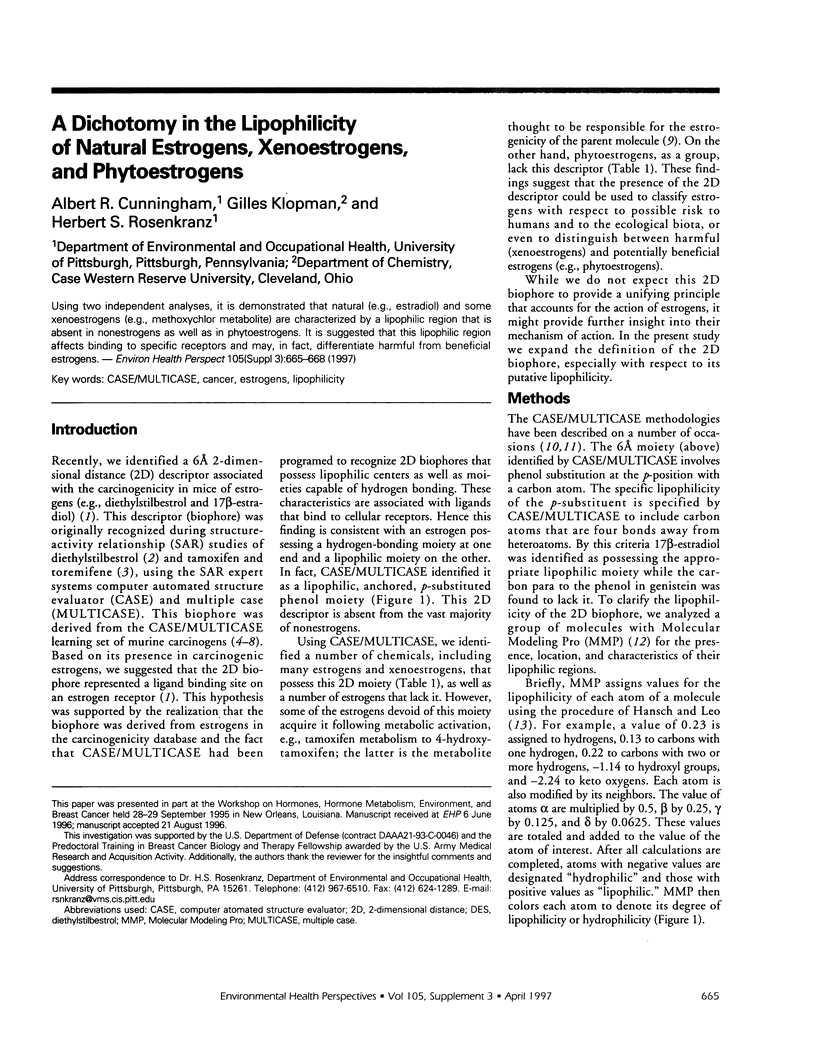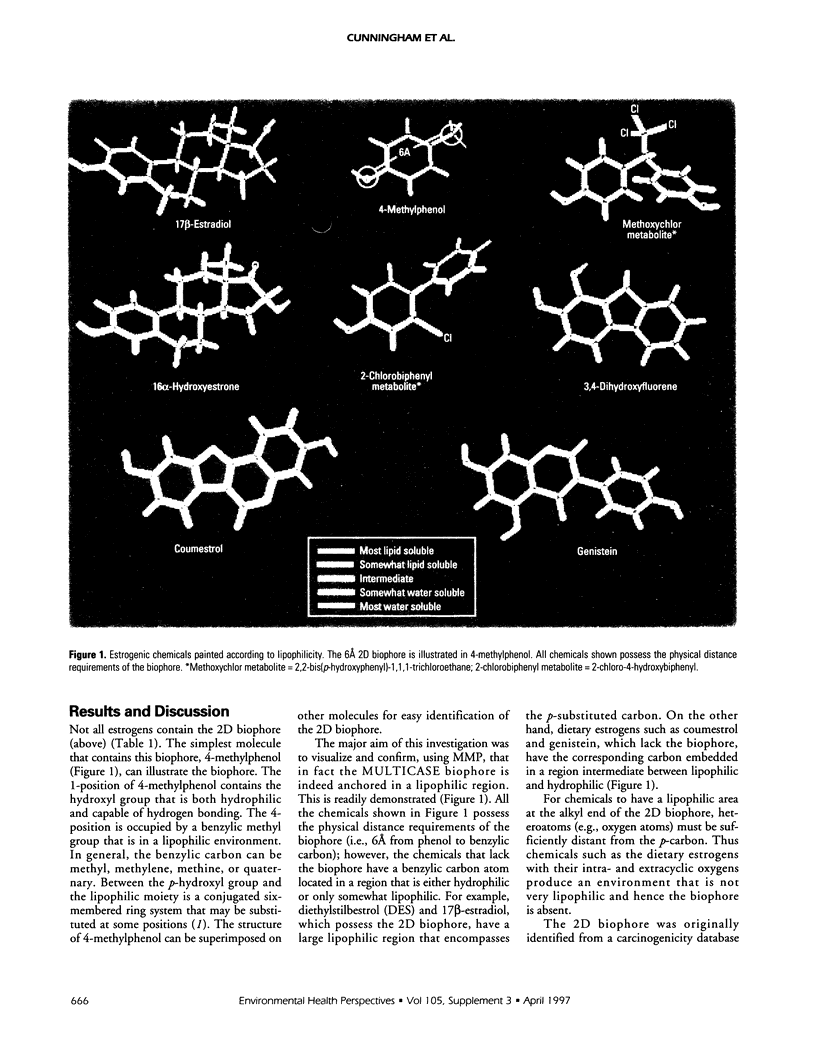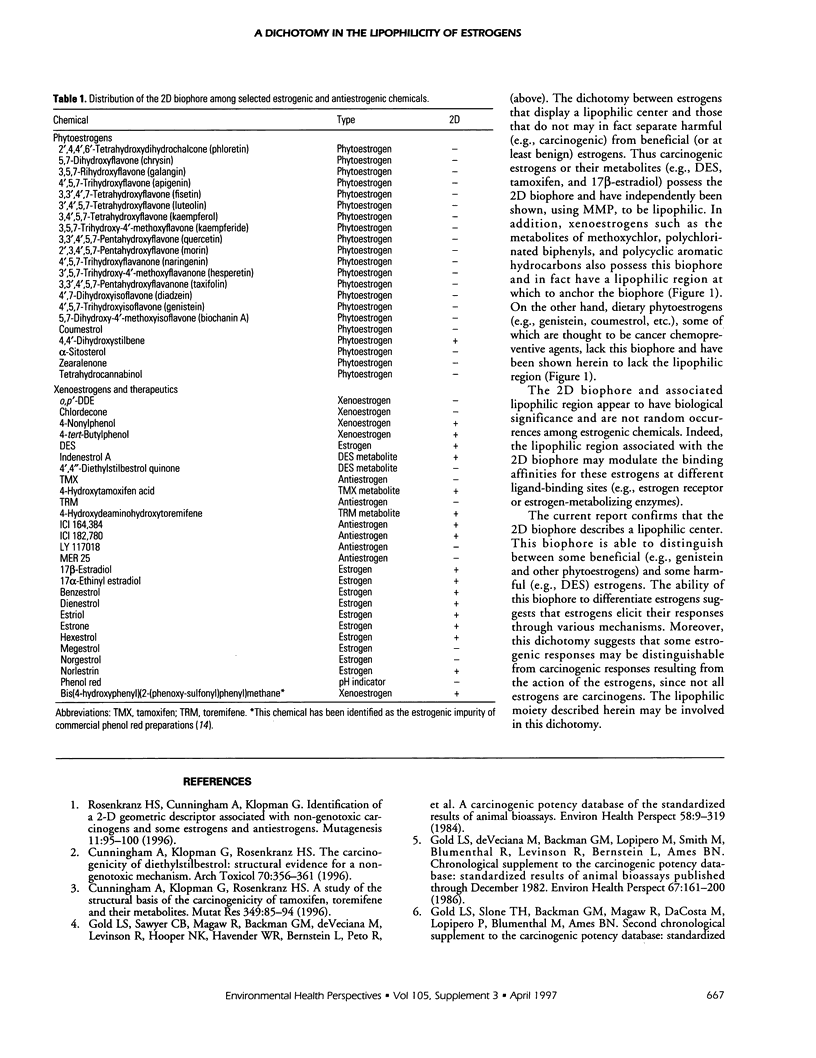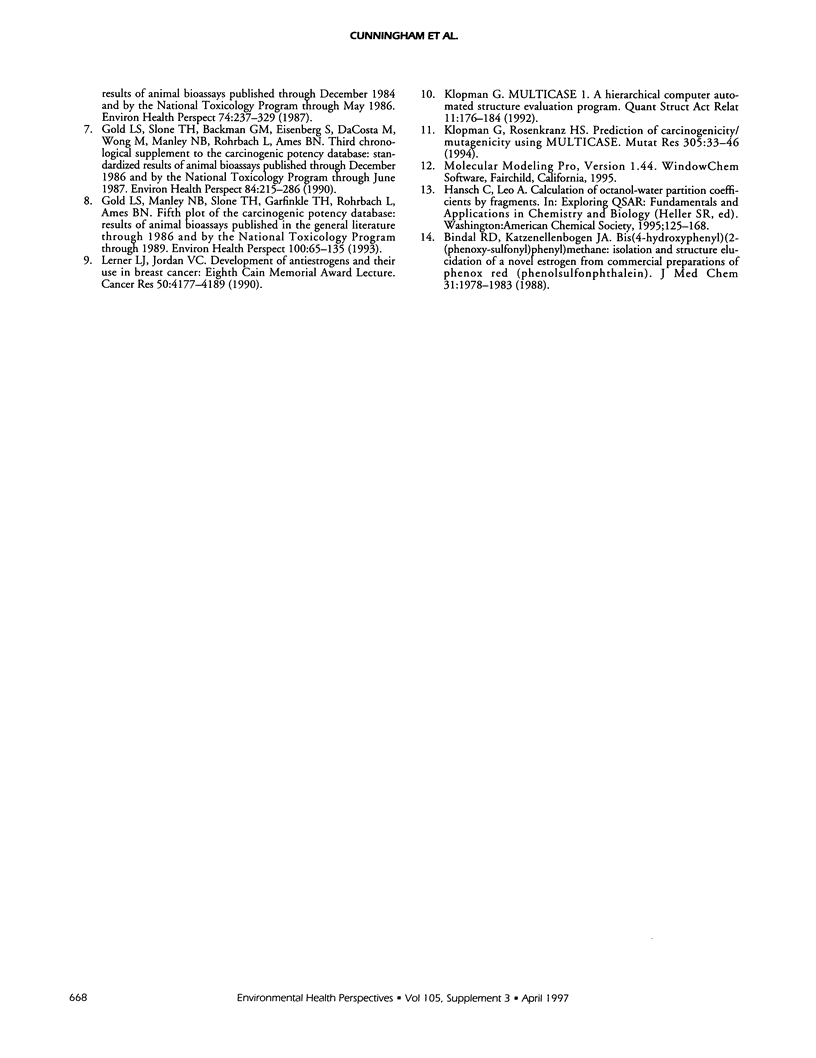Abstract
Using two independent analyses, it is demonstrated that natural (e.g., estradiol) and some xenoestrogens (e.g., methoxychlor metabolite) are characterized by a lipophilic region that is absent in nonestrogens as well as in phytoestrogens. It is suggested that this lipophilic region affects binding to specific receptors and may, in fact, differentiate harmful from beneficial estrogens.
Full text
PDF



Images in this article
Selected References
These references are in PubMed. This may not be the complete list of references from this article.
- Bindal R. D., Katzenellenbogen J. A. Bis(4-hydroxyphenyl)[2-(phenoxysulfonyl)phenyl]methane: isolation and structure elucidation of a novel estrogen from commercial preparations of phenol red (phenolsulfonphthalein) J Med Chem. 1988 Oct;31(10):1978–1983. doi: 10.1021/jm00118a020. [DOI] [PubMed] [Google Scholar]
- Cunningham A., Klopman G., Rosenkranz H. S. A study of the structural basis of the carcinogenicity of tamoxifen, toremifene and their metabolites. Mutat Res. 1996 Jan 17;349(1):85–94. doi: 10.1016/0027-5107(95)00163-8. [DOI] [PubMed] [Google Scholar]
- Cunningham A., Klopman G., Rosenkranz H. S. The carcinogenicity of diethylstilbestrol: structural evidence for a non-genotoxic mechanism. Arch Toxicol. 1996;70(6):356–361. doi: 10.1007/s002040050285. [DOI] [PubMed] [Google Scholar]
- Gold L. S., Manley N. B., Slone T. H., Garfinkel G. B., Rohrbach L., Ames B. N. The fifth plot of the Carcinogenic Potency Database: results of animal bioassays published in the general literature through 1988 and by the National Toxicology Program through 1989. Environ Health Perspect. 1993 Apr;100:65–168. doi: 10.1289/ehp.9310065. [DOI] [PMC free article] [PubMed] [Google Scholar]
- Gold L. S., Sawyer C. B., Magaw R., Backman G. M., de Veciana M., Levinson R., Hooper N. K., Havender W. R., Bernstein L., Peto R. A carcinogenic potency database of the standardized results of animal bioassays. Environ Health Perspect. 1984 Dec;58:9–319. doi: 10.1289/ehp.84589. [DOI] [PMC free article] [PubMed] [Google Scholar]
- Gold L. S., Slone T. H., Backman G. M., Eisenberg S., Da Costa M., Wong M., Manley N. B., Rohrbach L., Ames B. N. Third chronological supplement to the carcinogenic potency database: standardized results of animal bioassays published through December 1986 and by the National Toxicology Program through June 1987. Environ Health Perspect. 1990 Mar;84:215–286. doi: 10.1289/ehp.9084215. [DOI] [PMC free article] [PubMed] [Google Scholar]
- Gold L. S., de Veciana M., Backman G. M., Magaw R., Lopipero P., Smith M., Blumenthal M., Levinson R., Bernstein L., Ames B. N. Chronological supplement to the Carcinogenic Potency Database: standardized results of animal bioassays published through December 1982. Environ Health Perspect. 1986 Aug;67:161–200. doi: 10.1289/ehp.8667161. [DOI] [PMC free article] [PubMed] [Google Scholar]
- Klopman G., Rosenkranz H. S. International Commission for Protection Against Environmental Mutagens and Carcinogens. Approaches to SAR in carcinogenesis and mutagenesis. Prediction of carcinogenicity/mutagenicity using MULTI-CASE. Mutat Res. 1994 Feb 1;305(1):33–46. doi: 10.1016/0027-5107(94)90124-4. [DOI] [PubMed] [Google Scholar]
- Lerner L. J., Jordan V. C. Development of antiestrogens and their use in breast cancer: eighth Cain memorial award lecture. Cancer Res. 1990 Jul 15;50(14):4177–4189. [PubMed] [Google Scholar]
- Rosenkranz H. S., Cunningham A., Klopman G. Identification of a 2-D geometric descriptor associated with non-genotoxic carcinogens and some estrogens and antiestrogens. Mutagenesis. 1996 Jan;11(1):95–100. doi: 10.1093/mutage/11.1.95. [DOI] [PubMed] [Google Scholar]



